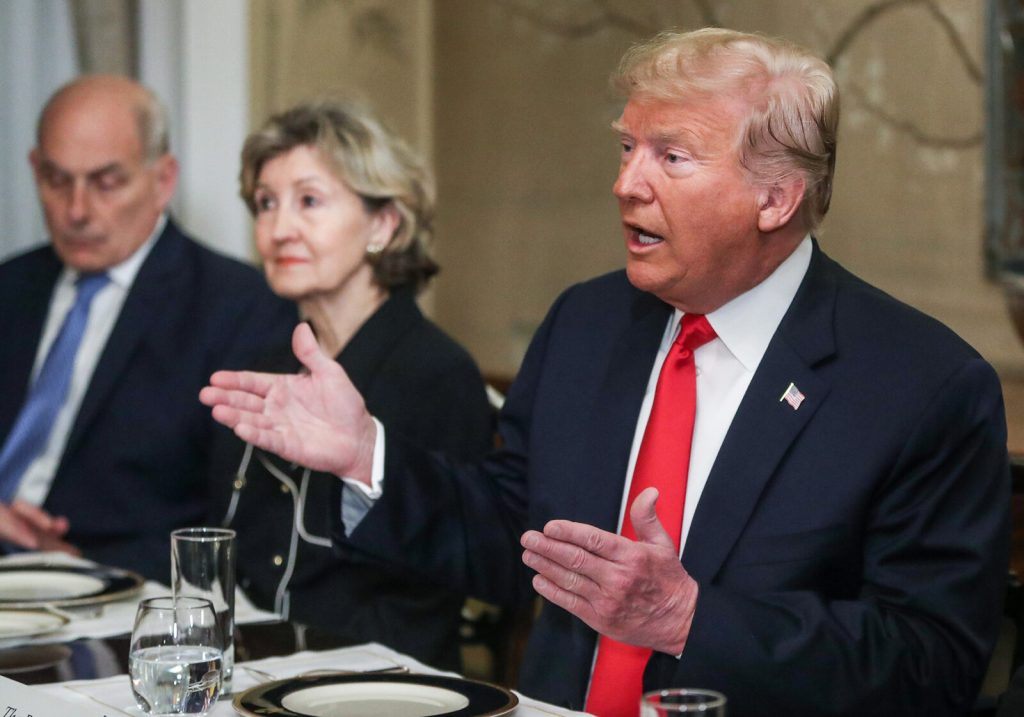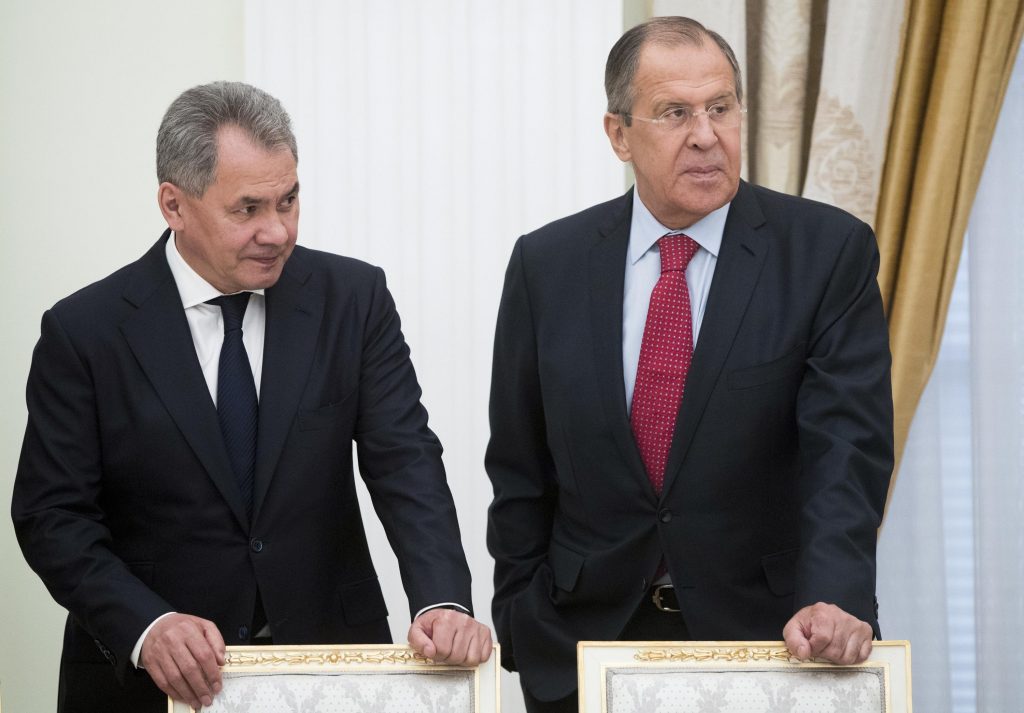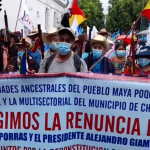Russia’s key external challenges and vulnerabilities
Russia’s continued policy of confrontation with the West is depleting the Kremlin, creating an unfavourable climate both around and within Russia. Brutal interference in the EU countries’ internal affairs and subversive intelligence operations on their soil have undermined confidence in Moscow and convinced the general public in targeted countries of Russia’s hostile and aggressive posture, reviving memories of the Cold War.
The Kremlin also chose a confrontational path amid the COVID-19 pandemic, focusing on disinformation efforts, compromising foreign-made vaccines and using own dubious drugs, positioned as vaccines, for geopolitical purposes. Moscow has been supporting antivaxxers’ movements through disinformation campaigns spun around the world. This further outrages governments whose countries are thus facing a much faster spread of the novel coronavirus.
Russia has jumped into a competition with the United States to seal wider presence in the European gas market, trying to reduce the share of American LNG. At the same time, the process of completing the Nord Stream 2 gas pipeline demonstrated Russia’s ability to create an artificial gas shortage in Europe and promptly pump up prices, for example, under the pretext of repairing one of the pipe’s sections.
The agreement reached between the United States and Germany on Nord Stream 2 and the recent summit in Geneva allowed Russia to strengthen its position in the media space. At the same time, they added impetus to Europe’s efforts in countering Russian expansionist policies in the region and mobilized NS2 opponents in the United States.
In practice, the confrontation between the United States and Russia will further intensify in response to cybercrime incidents, meddling in the elections, including those to Congress in 2022. The White House has already pointed to the signs of the ongoing interference.
The Biden administration is strengthening transatlantic and transpacific cooperation: with the EU, NORDEFCO, Japan, and South Korea.
The situation in Central Asia, including the scheduled pullback of U.S. troops from Afghanistan, has bolstered the Taliban.
Threats of the Taliban coming to power are exerting pressure on Central Asian countries, which are part of the Russian influence zone. As the Kremlin is fighting Washington in the region, the U.S. forces’ withdrawal from Afghanistan has left Russia without an effective strategy for the region. If the Taliban does come to power, they will face a radical change in the environment. The need to form the government will force the Taliban to address the country’s economic issues, as well as to negotiate cooperation with the perimeter states. This increases the risks that Afghanistan, ruled by the Taliban, would go for confrontation with the other countries across the region, which would in turn put pressure on Russia and force Moscow to provide certain countries assistance, including within the framework of the CSTO defense alliance. For Moscow, any engagement in the conflict in Central Asia would be a disaster, both militarily and politically.
The United States has agreed with Turkey to monitor the situation in Afghanistan, as Ankara vowed to ensure presence of its military contingent, which could grow in size. Turkish President Recep Tayyip Erdogan applies the policy, which has already become traditional, of common history and culture to expand influence in Afghanistan and across Central Asia in general. Against this background, Russia is losing the region to Turkey.
In the South Caucasus, the agreement reached between Armenia and Azerbaijan with regard to Nagorno-Karabakh under the auspices of Russia and Turkey remains unstable. This is confirmed by the incident on the Armenia-Azerbaijan border on July 28, 2021. The Kremlin’s independent game, aimed at increasing its military and political presence in Armenia, is at the same time undermining Russia’s peacekeeping potential among its allies. Azerbaijan’s statement on creating unified armed forces with Turkey indicates that the Kremlin’s role in the region is weakening, and in the medium term will lead to escalation between Ankara and Moscow.
Russia’s key internal challenges and problems
Most of Russia’s internal challenges and problems stem from Russia’s confrontational foreign policy, as well as the Putin regime’s desire to retain power and secure its transition.
An important short-term challenge for the Kremlin is holding the State Duma elections. In the absence of a new national idea, around which the political leadership could rally the voters, it instead offers the outdated concept of a “besieged fortress.” This is happening amid plunging popular ratings of the incumbent government and signs of critical deterioration in the economy.
It should be noted that in Russia, no alternative (opposition) forces are available that could gain support of the general population. Thus, today Russia is close to the situation observed in 1991: the country’s economy is leading to a growing popular discontent while the lack of real opposition doesn’t allow for a peaceful and legitimate power transition. Continued economic depletion in the current conditions could lead to radical scenarios becoming a reality for Russian society.
Vladimir Putin, who until recently has kept his distance from the ruling United Russia party, has publicly reaffirmed support for this political force. Parliamentary elections are indeed crucial for Putin. That’s because the new parliament should ensure power transition in 2024. However, the population in Russia is loyal to the figure of their “tsar”, while being quite capable of protesting against security forces and lower-tier officials. Thus, the victory of the pro-government United Russia could only be sealed through major election fraud. However, this may reinforce anti-Putin sentiment, although the scenario of mass riots is unlikely even if the social and economic situation deteriorates.
Public discontent over the low living standards is likely to lead to population degradation, worse stats on alcohol and drug consumption, and, consequently, a higher crime rate across country.
The fiasco of Putin’s regime in tackling the coronavirus, the failure of the vaccination campaign, and the inability of the Russian vaccine to effectively protect people against the disease are forcing the authorities to focus on social and economic programs to support fellow citizens. Such programs require higher spending, which is impossible provided that current macro indicators remain in place. The only way these government-sponsored social programs could in fact be implemented is through increasing the overall money volume and income from energy exports. However, in the first case, this would increase inflationary pressure on the economy, while the second option requires investment or a move to create some stressful burden on the world market, which would in turn result in the increasing sanctions pressure and, consequently, higher pressure on the economy.
The election factor increases the pressure on the state reserve, which lays the groundwork for food shortages.
Among Russia’s economic threats in the short term:
– Rising inflation (population and businesses shifting toward gold). In July, the observed inflation rate (as estimated by the population) stood at 16.5% while official CPI is 6.5% Y/Y. One in five Russians estimate inflation at 30% and above.
– Growing debt burden. Citizens’ debts have risen to USD 31 billion. The total debt of the population to banks exceeded the size of the federal budget and equaled the amount that the population holds in banks in the national currency. Demand for loans accelerates inflation and leads to further poverty growth in Russia. The dynamics work toward increasing inflation expectations and push prices up.
– Banking system in devastation. The Russian population is actively withdrawing money from bank accounts. Deposit rates no longer cover inflation, while people are trying to withdraw funds while they still have what’s left of their purchasing power.
– Falling purchasing power that will contribute to rising poverty.
– Depletion of strategic stocks. The rate of decline has tripled in the last three years. From 30 billion tonnes of oil reserves, only 36% is profitable. This would be enough for 19 years of production. For the past three years, the search and exploration plan for Arctic oil, gold, silver, uranium, chromium ore, lead, and tungsten hasn’t been implemented.
– Reduction of real pensions. The devaluation of pensions delivers a blow to the electoral core. The return on investment is decreasing. The return on pension funds in the VEB Bank in the first half of the year became negative in real terms.
This fall, the said trends will become even more apparent, and these developments will be observed amid the parliamentary election process.






